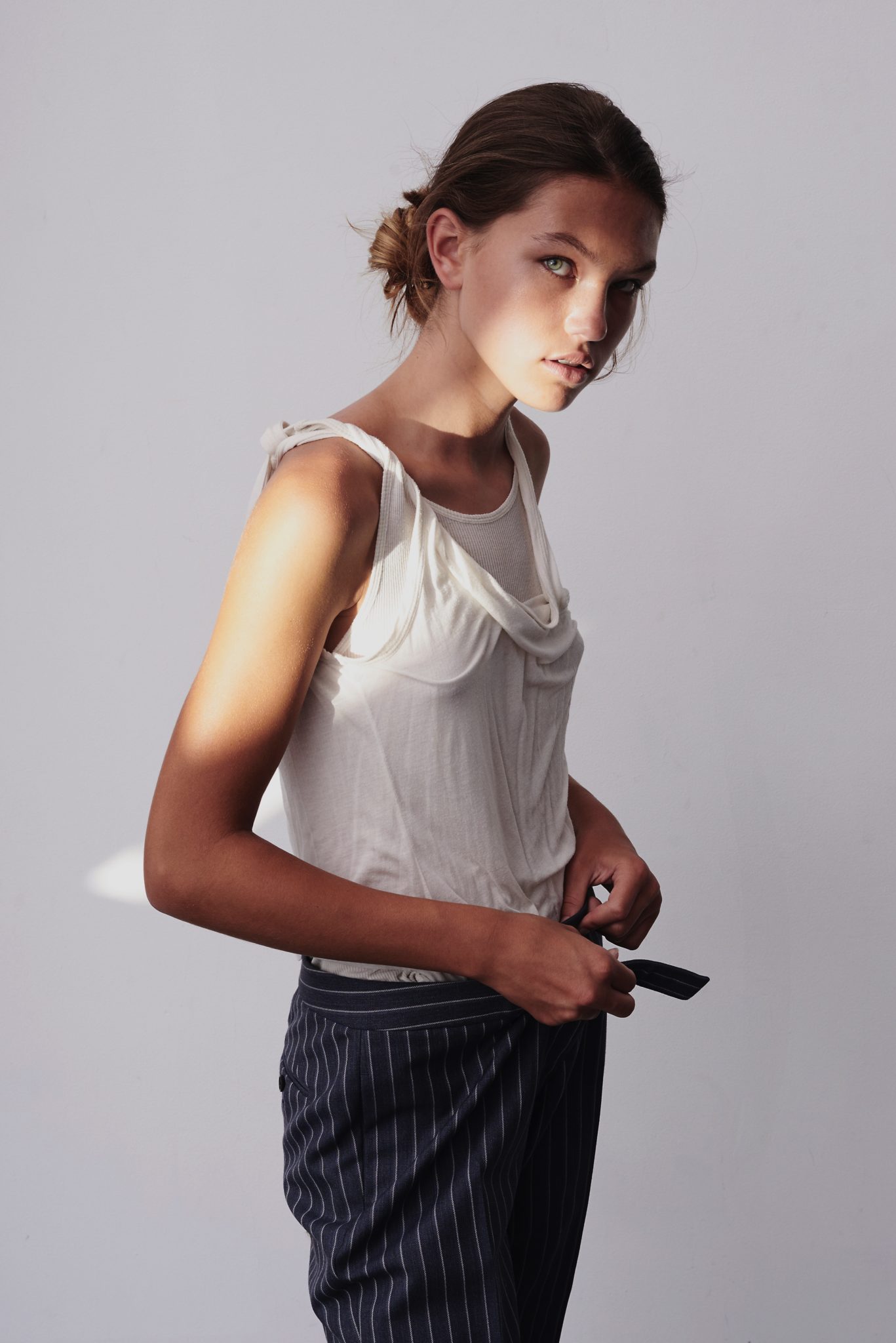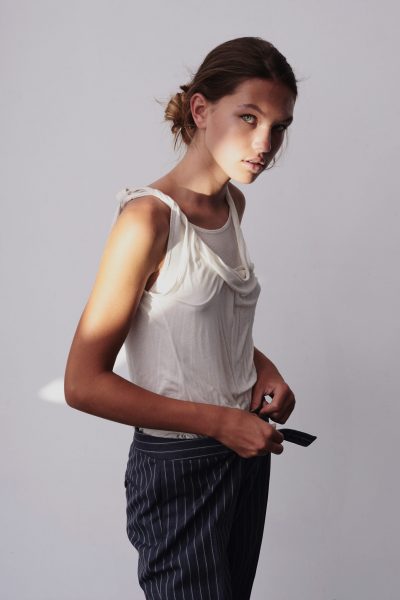


Sit still, look pretty. Many people think modeling is one of the easiest jobs around. After all, all they have to do is walk around in a pair of heels.
Junior Marie Pachtner, who has been modeling for a number of years, laughed at this misconception.
“That is not how it works,” she said.
As a kid, Pachtner was constantly told that she should be a model.
“I took it as a compliment,” she said. “I never thought of actually trying to pursue it.”
One day, while she was vacationing in Norway with her family, a photographer jumped out of her car and encouraged Pachtner to get into the modeling industry.
“She told me what websites to go on if I was interested,” Pachtner said. “I did my research, went to an open call, and got signed.”
Junior Rachel Heath just recently began her modeling career and plans on building up her portfolio until she finishes high school.
“[These next two years], I [will] mainly do test shoots,” she said, “which is where they get a stylist, a makeup artist and a photographer.”
Though, at the beginning, test shoots are not paid, they mutually benefit the model and the photographer.
“[Because of your contract], it’s all free for you,” Heath said. “You get a bunch of photos to build up your book [or portfolio], so then you can take your book … to an audition and show the casting director your previous work.”
While Heath is signed to Stars Agency in San Francisco, Pachtner is signed to two different companies: Look in San Francisco and DNA Model Management in New York, which allows her to do shoots and runway shows in both cities.
“One of the biggest runway shows I’ve done was last spring, it was a designer called Carolina Herrera,” Pachtner said. “It was in [San Francisco].”
Pachtner has also done magazine spreads for Dreamingless, Ellements and Teeth Magazine.
Modeling is not easy, or quick, work. Heath thinks that people don’t truly understand how much work goes into the finished product.
“Shoots usually go nine hours, it’s not like you’re sitting down,” she said. ”It’s a job. You’re expected to perform well.”
Shoots are complicated — involving a whole team of artists — and are often trial-and-error.
“Sometimes you’ll have up to eight outfit changes … You shoot [on average] six looks, the makeup gets changed for each look,” Pachtner said. “I would say each look takes about half an hour [to prepare].”
Shoots can be physically and emotionally draining.
“You have to keep up this look,” Pachtner said. “It’s not like you’re super relaxed. You have to keep up this vibe they want … for the entire eight hours.”
Though both Pachtner and Heath plan to continue modeling on the side, they have decided to pursue other passions.
“I’m thinking about a gap year where I can travel and do modeling,” Heath said, “[but] I’m not going to do it for the rest of my life.”
Even for those who “make it,” their modeling career is often extremely short. However, modeling has its benefits.
“It’s just a great opportunity, socially and personally,” Pachtner said. “You get to meet so many personalities and types of people with different visions.”
In addition to being an opportunity to meet artistic people, modeling, like any other job, is a source of income.
“I need the money for college,” Heath said, “[it will] really help paying off tuition.”
Furthermore, Pachtner believes that modeling has made her a more confident person.
“Seeing yourself in a magazine or in some photos,” she said, “it definitely gives you self-confidence.”
Though Pachtner and Heath have had pleasant experiences in the modeling industry, many models have not. According to Heath, in San Francisco, the pressure is not as intense.
“If you’re in Milan or New York … obviously, you are going to be rejected from shows,” she said.
She acknowledges that she will be turned away eventually. “I have to understand that it’s not me, I’m just not the look they are looking for. Obviously … there is a big rejection that you have do deal with.”
It is no secret that models can undergo immense pressure to fit the “look” — or have the perfect skin or body. Some models struggle with mental health issues due to this pressure. As a study conducted in 2012 by Model Alliance found, 68 percent of models suffer from some combination of anxiety and depression and 31 percent from eating disorders.
“There is a misconception that every single model is anorexic,” said Heath. “There definitely are girls who have eating issues because of the pressure [put on them] by the industry … However, to make a generalization about all girls is [not representative of the field].”
Heath has felt the pressure of upholding a perfect image herself.
“I put pressure on myself … to have clear skin and everything,” she said. “That’s hard. You have to balance the stress you put on yourself.”
Though the models whose bodies are on billboards and whose faces make the front page may appear distant, many models dream and struggle the same way the rest of us do. And while many people only see the finished product, the photos that make it into the public eye require hours of effort and a whole team of artists.
“You really have to work to get where you are, all these girls at the top have to work so hard to get there,” Heath said, “but it’s worth it in the end.”



